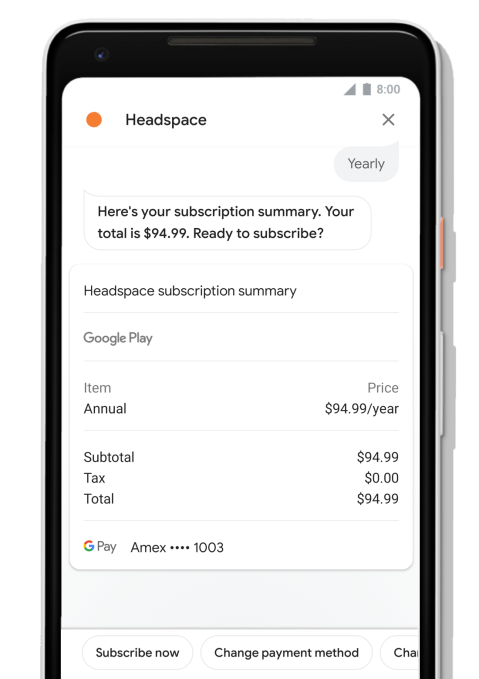Today’s bombshell Bloomberg story has the internet split: either the story is right, and reporters have uncovered one of the largest and jarring breaches of the U.S. tech industry by a foreign adversary… or it’s not, and a lot of people screwed up.
To recap, Chinese spies reportedly infiltrated the supply chain and installed tiny chips the size of a pencil tip on the motherboards built by Supermicro, which are used in data center servers across the U.S. tech industry — from Apple to Amazon. That chip can compromise data on the server, allowing China to spy on some of the world’s most wealthy and powerful countries.
Apple, Amazon and Supermicro — and the Chinese government — strenuously denied the allegations. Apple also released its own standalone statement later in the day, as did Supermicro. You don’t see that very often unless they think they have nothing to hide. You can — and should — read the statements for yourself.
Welcome to the murky world of national security reporting.
I’ve covered cybersecurity and national security for about five years, most recently at CBS, where I reported exclusively on several stories — including the U.S. government’s covert efforts to force tech companies to hand over their source code in an effort to find vulnerabilities and conduct surveillance. And last year I revealed that the National Security Agency had its fifth data breach in as many years, and classified documents showed that a government data collection program was far wider than first thought and was collecting data on U.S. citizens.
Even with this story, my gut is mixed.
Where reporters across any topic and beat try to seek the truth, tapping information from the intelligence community is near impossible. For spies and diplomats, it’s illegal to share classified information with anyone and can be — and is — punishable by time in prison.
As a security reporter, you’re either incredibly well sourced or downright lucky. More often than not it’s the latter.
Naturally, people are skeptical of this “spy chip” story. On one side you have Bloomberg’s decades-long stellar reputation and reporting acumen, a thoroughly researched story citing more than a dozen sources — some inside the government and out — and presenting enough evidence to present a convincing case.
On the other, the sources are anonymous — likely because the information they shared wasn’t theirs to share or it was classified, putting sources in risk of legal jeopardy. But that makes accountability difficult. No reporter wants to say “a source familiar with the matter” because it weakens the story. It’s the reason reporters will tag names to spokespeople or officials so that it holds the powers accountable for their words. And, the denials from the companies themselves — though transparently published in full by Bloomberg — are not bulletproof in outright rejection of the story’s claims. These statements go through legal counsel and are subject to government regulation. These statements become a counterbalance — turning the story from an evidence-based report into a “he said, she said” situation.
That puts the onus on the reader to judge Bloomberg’s reporting. Reporters can publish the truth all they want, but ultimately it’s down to the reader to believe it or not.
In fairness to Bloomberg, chief among Apple’s complaints is a claim that Bloomberg’s reporters were vague in their questioning. Given the magnitude of the story, you don’t want to reveal all of your cards — but still want to seek answers and clarifications without having the subject tip off another news agency — a trick sometimes employed by the government in the hope of lighter coverage.
Yet, to Apple — and Amazon and other companies implicated by the report — they too might also be in the dark. Assuming there was an active espionage investigation into the alleged actions of a foreign government, you can bet that only a handful of people at these companies will be even cursorily aware of the situation. U.S. surveillance and counter-espionage laws restrict who can be told about classified information or investigations. Only those who need to be in the know are kept in a very tight loop — typically a company’s chief counsel. Often their bosses, the chief executive or president, are not told to avoid making false or misleading statements to shareholders.
It’s worth casting your mind back to 2013, days after the first Edward Snowden documents were published.
In the aftermath of the disclosure of PRISM, the NSA’s data pulling program that implicated several tech companies — including Apple, but not Amazon — the companies came out fighting, vehemently denying any involvement or connection. Was it a failure of reporting? Partially, yes. But the companies also had plausible deniability by cherry picking what they rebuffed. Despite a claim by the government that PRISM had “direct access” to tech companies’ servers, the companies responded that this wasn’t true. They didn’t, however, refute indirect access — which the companies wouldn’t be allowed to say in any case.
Critics of Bloomberg’s story have rightfully argued for more information — such as more technical data on the chip, its design and its functionality. Rightfully so — it’s entirely reasonable to want to know more. Jake Williams, a former NSA hacker turned founder of Rendition Infosec, told me that the story is “credible,” but “even if it turns out to be untrue, the capability exists and you need to architect your networks to detect this.”
I was hesitant to cover this at first given the complexity of the allegations and how explosive the claims are without also seeking confirmation. That’s not easy to do in an hour when Bloomberg’s reporters have been working for the best part of a year. Assuming Bloomberg did everything right — a cover story on its magazine, no less, which would have gone through endless editing and fact-checking before going to print — the reporters likely hit a wall and had nothing more to report, and went to print.
But Bloomberg’s delivery could have been better. Just as The New York Times does — even as recently as its coverage of President Trump’s tax affairs, Bloomberg missed an opportunity to be more open and transparent in how it came to the conclusions that it did. Journalism isn’t proprietary. It should be open to as many people as possible. If you’re not transparent in how you report things, you lose readers’ trust.
That’s where the story rests on shaky ground. Admittedly, as detailed and as well-sourced as the story is, you — and I — have to put a lot of trust and faith in Bloomberg and its reporters.
And in this day and age where “fake news” is splashed around wrongly and unfairly, for the sake of journalism, my only hope is they’re not wrong.
from Apple – TechCrunch https://ift.tt/2Pbzsud

 Even in cases where the Assistant already offered visual feedback — say when you ask for the weather — the team has now also redesigned those results and brought them more in line with what users are already seeing on smart displays from the likes of
Even in cases where the Assistant already offered visual feedback — say when you ask for the weather — the team has now also redesigned those results and brought them more in line with what users are already seeing on smart displays from the likes of 